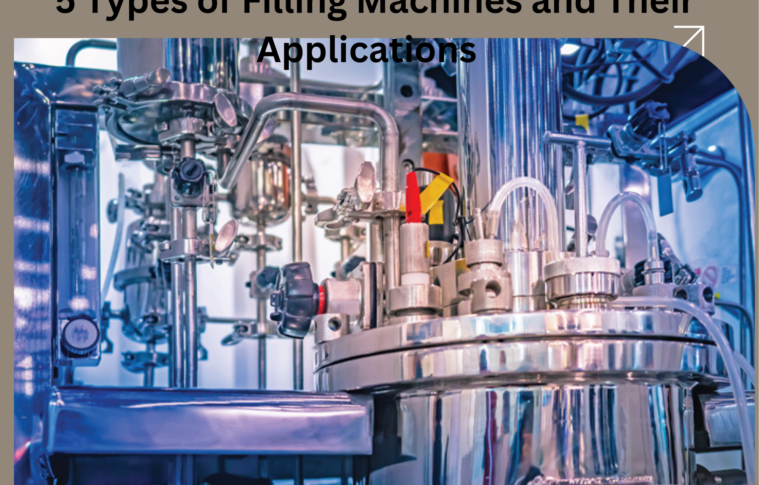5 Types of Filling Machines in Industry
Introduction to Filling Machines
In this informative blog, we delve into the world of filling machines and explore five different types. Discover liquid fillers, powder fillers, volumetric fillers, piston fillers, and auger fillers.
From liquids to powders, a wide range of substances need to be precisely dispensed into containers or packaging. That’s where filling machines come into the picture, automating the filling process and minimizing errors.
In this guide, we will explore different types of filling machines and their applications, with a particular focus on their relevance to lab furniture.
Piston Filling Machines: Precision and Versatility for Liquid Products
Piston filling machines excel in delivering precision in liquid filling. These machines utilize a piston and cylinder mechanism to control the volume of liquid dispensed. The piston moves inside the cylinder, drawing in the liquid and then pushing it out into the container with great precision.
In the pharmaceutical industry, precision, accuracy, and efficiency are of paramount importance when it comes to filling liquid products into vials, syringes, or other containers.
Pharmaceutical manufacturing facilities often have well-established pharma equipment setups, including lab furniture, cleanrooms, and automated production lines. Piston filling machines can seamlessly integrate into these setups, aligning with existing workflow and equipment. They can be easily incorporated into conveyor systems, automated packaging lines, or cleanroom environments, ensuring smooth and efficient production processes.
Volumetric Filling Machines: Reliable and Efficient for Diverse Product Types
In various industries, accurate and efficient product filling is essential for ensuring consistent quality and meeting production demands. Volumetric filling machines have proven to be reliable and efficient solutions for filling diverse product types, including liquids, powders, granules, and viscous substances.
One of the key advantages of volumetric filling machines is their reliability. These machines employ various volumetric measurement mechanisms such as measuring chambers, cups, or positive displacement pumps to ensure accurate and consistent fill volumes.
Volumetric filling machines offer versatility in handling diverse product types. They can accommodate a wide range of substances, from liquids with different viscosities to powders, granules, and even viscous materials. By selecting the appropriate filling mechanism and configuration, these machines can also have the specific characteristics of different products, ensuring optimal filling performance and consistent results.
Auger Filling Machines: Precision and Control for Dry Products
When it comes to filling dry or powdered products, precision and control are essential to ensure accurate measurements and minimize product waste.
Auger filling machines have emerged as reliable solutions, offering precise and controlled filling capabilities for a wide range of dry substances.
Control is another crucial aspect of auger filling machines.
The design of the auger and the fill nozzle can be customized to accommodate different product characteristics and achieve optimal filling performance. This versatility makes auger fillers widely applicable across industries where dry product filling is a common requirement.
Time-Pressure Filling Machines: High-Speed and Consistent Liquid Filling
In industries where high-speed liquid filling is required, time-pressure filling machines have become go-to solutions. These machines offer exceptional speed, efficiency, and consistency in liquid product filling operations.
The primary advantage of time-pressure filling machines lies in their ability to achieve high-speed liquid filling. These machines use a pressurized system to force liquids into containers quickly.
Time-pressure filling machines are versatile and can handle a wide range of liquid viscosities. From thin, free-flowing liquids to more viscous substances, the filling parameters can be adjusted to accommodate different product consistencies. Also versatility makes them suitable for industries that deal with a diverse range of liquid products.
Overflow Filling Machines: Ideal for Foamy or Overflowing Liquids
In industries that deal with foamy or overflowing liquids, precise and efficient filling can be a challenge. However, overflow filling machines have emerged as ideal solutions for such applications. These machines offer a unique filling method that ensures accurate and consistent fill levels.
With their specialized design and functionality, overflow fillers have become essential equipment in industries such as cosmetics, chemicals & beverages
The key advantage of overflow filling machines lies in their ability to handle foamy or overflowing liquids effectively. The filling process involves filling containers to a predetermined level, allowing the excess liquid to overflow and return.
Overflow filling machines offer versatility in handling a wide range of liquid products. Whether it’s beverages, cosmetics, chemicals, or other foamy or overflowing liquids, these machines can be adjusted. They can handle containers of various sizes, from small bottles to larger containers, allowing for flexibility in production operations.
The principle behind gravity filling machines is straightforward. The liquid to be filled is placed in a holding tank positioned above the containers. The force of gravity allows the liquid to flow down into the containers through a nozzle or valve, ensuring accurate and consistent filling. The filling process is usually controlled by a timer or a level sensor, which stops the flow once the desired volume is reached.
Gravity Filling Machine
Gravity filling machines offer a simple and cost-effective solution for filling liquids. Their straightforward operation, low maintenance requirements, and compatibility with different products and containers make them a popular choice across industries. By choosing gravity filling machines, businesses can streamline their filling processes while keeping costs under control.
Conclusion
In conclusion, understanding the different types of filling machines can greatly benefit businesses in various industries. Whether you need to fill liquids, powders, or other substances, there is a specific type of filling machine designed to meet your requirements. By automating the filling process, these machines can enhance productivity, accuracy, and efficiency, ultimately saving time and resources. Consider the specific applications and benefits of each type of filling machine to determine the best fit for your business needs. Embracing the right filling technology can streamline your production process and contribute to the success of your operations.






























